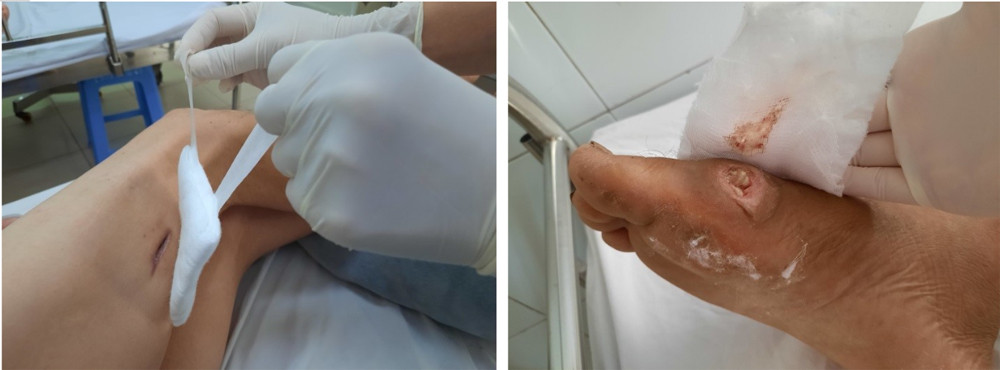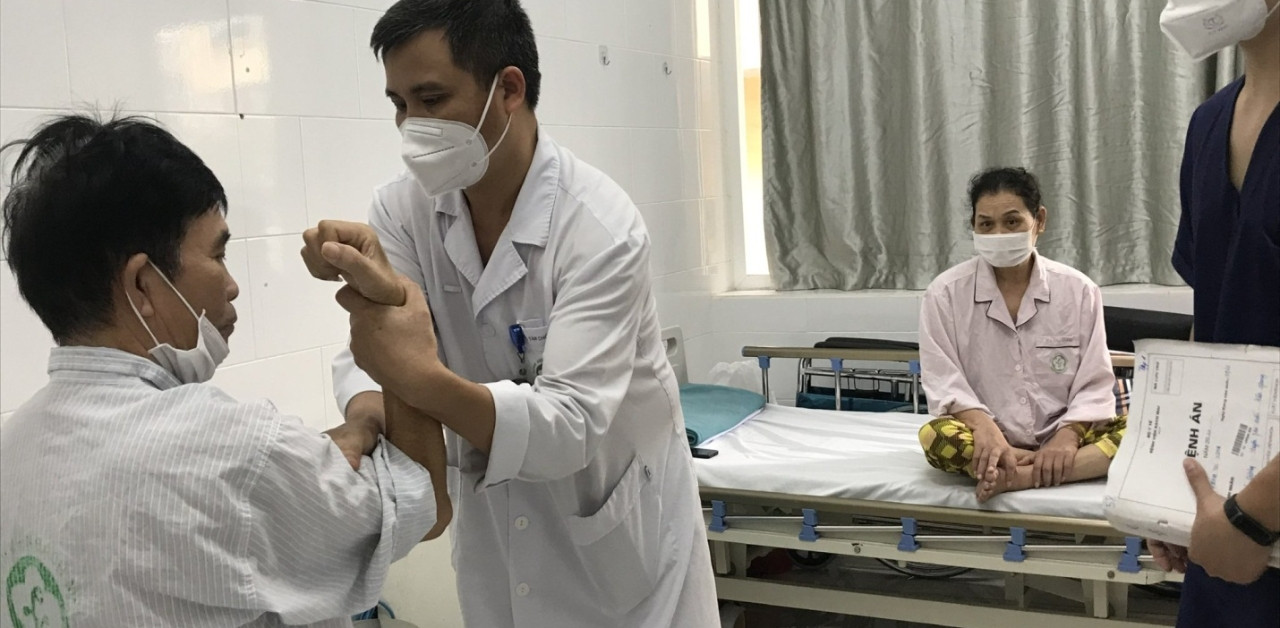Man-eating bacteria recorded the first case in Dak Lak
The Center for Disease Control of Dak Lak province on June 8 announced the recording of a case of Whitmore’s disease in Chieng village, Ia Lop commune, Ea Sup district.
The patient is a 9-year-old girl named NTV Baby who was admitted to the Central Highlands General Hospital on June 4 with a fever of 39 degrees Celsius, both sides of the parotid gland were swollen, firm, and not mobile.
The left corner of the baby’s jaw has a soft spot that turns pus, a lot of pain, it’s difficult to open the mouth, the throat is slightly red, there is an ulcer on the tip of the tongue.
Doctors diagnosed the baby with hyponatremia, bilateral parotid abscess, and monitored mumps for complications, sepsis with multi-organ damage…
On June 7, the patient had a continuous high fever, 41 degrees Celsius. The parotid abscess on both sides was cut, oozing pus and blood. She also goes to the toilet 5 times a day continuously.

Test results showed that the girl was positive for the bacteria Burkholderia Pseudomallei, which causes Whitmore’s disease. A diagnosis of this bacterial sepsis and monitoring for meningitis is given.
The family said that about 10 days after being admitted to the hospital, the patient started to get sick with high fever, swelling and pain in the parotid region.
The patient’s family took the patient to a private clinic, took medicine for 3 days (unknown type) but did not decrease, so the patient was examined at the hospital.
According to information from Ho Chi Minh City Children’s Hospital, Burkholderia Pseudomallei bacteria live on the surface of water and in soil, especially mud.
The bacteria are transmitted to people through scratches on the skin or through the respiratory tract when breathing dust particles or droplets in the air containing bacteria, especially during the rainy season (from July to November).
Therefore, the number of hospital admissions for this disease in the rainy season often increases. Typically, in November 2020, Hue Central Hospital, Da Nang Hospital said that it had received nearly 60 patients in just 1.5 months, even though it was only a few sporadic cases before.
This bacteria can cause necrosis and death of tissues in the body, causing ulcers or abscesses on the skin, pneumonia, blood infections … Therefore, Burkholderia Pseudomallei causing Whitmore’s disease is still commonly referred to as bacteria by folk people. cannibalistic”.
Symptoms of Whitmore’s Disease
According to Assoc. Prof. Dr. Do Duy Cuong, Director of the Center for Tropical Diseases – Bach Mai Hospital (Hanoi), Whitmore’s disease has diverse clinical manifestations.
The patient has a fever, with patterns such as fever or fever accompanied by chills, prolonged fever; respiratory failure; skin ulcers; urinary tract infections; pneumonia; liver abscess; spleen; sepsis, multi-organ failure…
Due to diverse clinical conditions, patients are often misdiagnosed with other diseases such as pneumonia, tuberculosis, muscle abscess, sepsis caused by other bacteria such as staphylococcus, streptococcus, etc.
Not only is it difficult to diagnose, Whitmore is also difficult to treat. The disease also has a high mortality rate (about 40%). In addition to the cause of complications from severe pneumonia, sepsis and septic shock that cause death, according to Assoc. Cuong, despite the correct diagnosis, if the patient is not treated with the correct dose, regimen and close monitoring, the disease will easy to relapse, health gradually deteriorates and can still die.
In addition, many patients give up due to the long and expensive treatment.
The definitive diagnosis of the causative organism of Whitmore’s disease is made by blood culture and abscess fluid. According to Associate Professor Cuong, people with underlying diseases (diabetes, liver, kidney, chronic lung, immunocompromised…) have a higher risk of disease.
The expert confirmed that Whitmore’s disease is not transmitted from person to person. There is currently no vaccine, so prevention measures are mainly to ensure personal hygiene and environmental sanitation.
People should limit direct contact with dirty soil and water, especially in heavily polluted places. Do not bathe, swim, dive in ponds, lakes, rivers at/near polluted places.
Using protective gear (shoes, boots, gloves …) for people who often work outdoors, contact with soil, mud and dirty water is a useful preventive measure.
In addition, it is necessary to ensure personal hygiene, often wash hands with soap and clean water, especially before and after preparing food, before eating, after going to the toilet, after working in the field. Implement cooked food, cooked food, ensure food hygiene and safety…
Associate Professor Cuong also recommends that when there are open wounds, sores or burns, people need to avoid contact with potentially contaminated soil or water. If contact is required, use a waterproof bandage and should be washed to ensure hygiene.
When an infection is suspected, it is necessary to go to a medical facility for advice, examination, detection and timely treatment.
Thanh Hien
at Blogtuan.info – Source: vietnamnet.vn – Read the original article here


